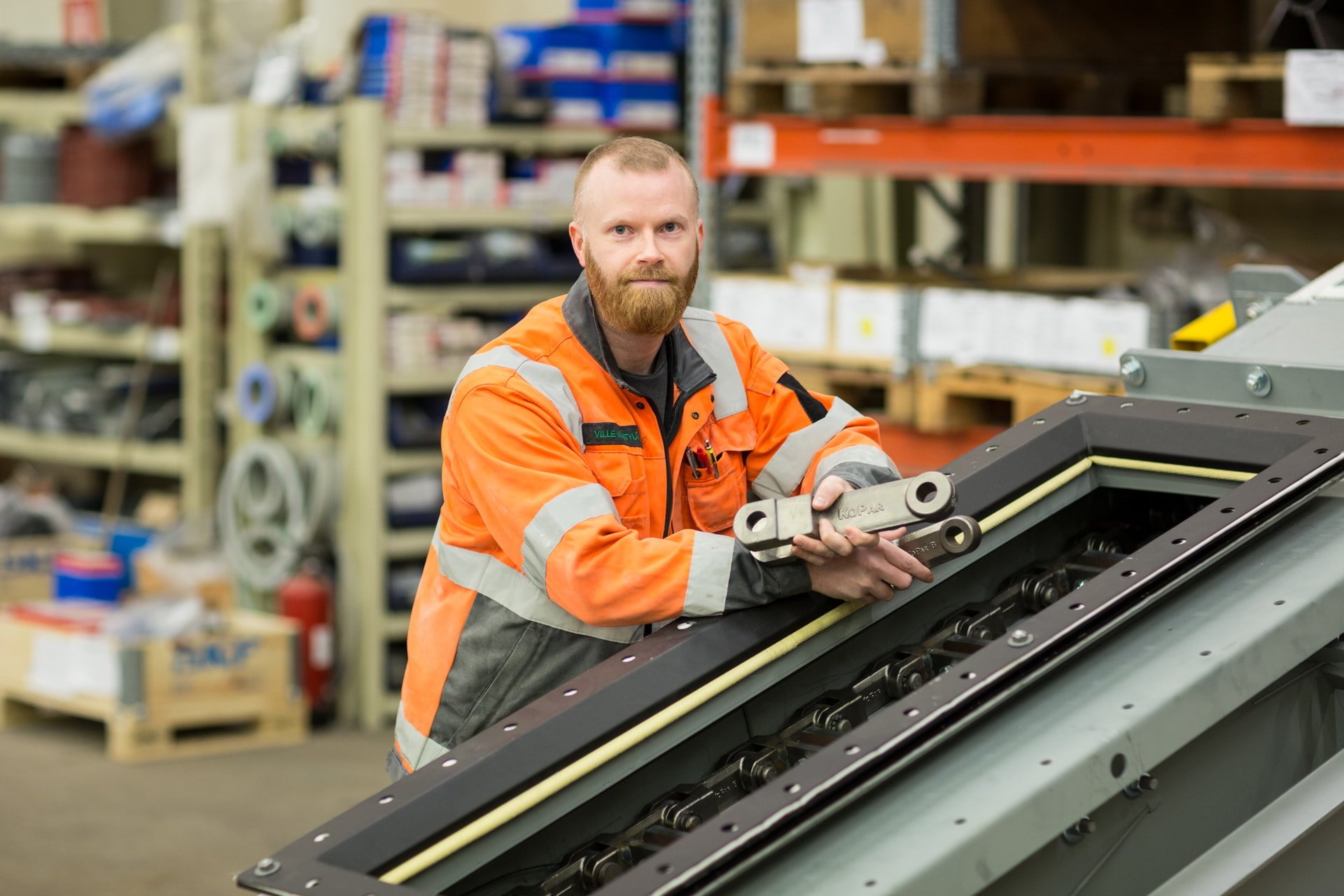How does a redler differ from traditional ash conveyors? When examining this question, it is important to note that a redler and a chain conveyor are actually synonyms. This means that there are practically no concrete differences between these terms. However, even though they are synonyms, it is interesting to explore why these devices are used and what advantages they offer compared to traditional conveying systems. What kinds of innovations and solutions have been developed around these conveyors and how have they evolved over time?
What is a redler and a chain conveyor?
Redler and chain conveyors are devices designed to transport hot ash efficiently and safely. Their operation is based on chains attached to flights or paddles that move in a closed or partially closed channel. Thanks to this mechanism, the material is transported to the desired location, making the process both efficient and safe.
Chain conveyors are particularly useful in industrial applications where the transfer of hot ash is necessary. They can handle large amounts of material in continuous use, which is critical in many production processes. Additionally, these conveyors can be equipped with various additional features, such as water cooling, which makes them even more versatile.
As synonyms, redler and chain conveyor offer the same benefits and functions. They are crucial devices when aiming for efficiency and safety in handling hot materials, and their applications vary according to the needs of different industries.
How do traditional ash conveyors work?
Traditional ash conveyors often operate with belt or screw conveying mechanisms, which may not always be best suited for transferring hot or abrasive materials. These systems may require more space and wear out faster under intensive use, increasing maintenance needs and costs.
Structurally, traditional conveyors can be open or closed, but their ability to control dust and spills is often limited. This can lead to environmental pollution and an increase in safety risks at the workplace. Additionally, the energy consumption of traditional conveyors can be higher, making them less economical in the long run.
It is important to note that although traditional ash conveyors have been in use for a long time, their weaknesses have led to the development of more innovative solutions, such as the introduction of redlers and chain conveyors.
Kopar's role in ash conveying technology
Kopar has been at the forefront of the development of ash conveying technology, utilizing decades of experience and expertise. Our innovative solutions have helped reduce the environmental burden of industrial processes and improve their efficiency.
Specifically, the chain conveyors developed by Kopar are designed to withstand even the most demanding conditions. We use high-quality materials, such as boron steel, which ensures the durability and performance of our conveyors even at extreme temperatures.
Summary
In this article, we have examined how redlers and chain conveyors differ from traditional ash conveyors, even though they are synonyms. We have explored how these advanced conveying systems work and what advantages they offer to the industry. In particular, the efficiency, space utilization, and lower maintenance needs of the redler make it an attractive alternative to traditional systems.
Kopar's role in the field is significant, providing innovative and sustainable solutions that support the industry's green transition. Our customers are encouraged to explore the solutions we offer, which can enhance their production processes and reduce environmental impacts.

You have a challenge that needs solving?
Let us help! Contact us for more information about our products and services.
